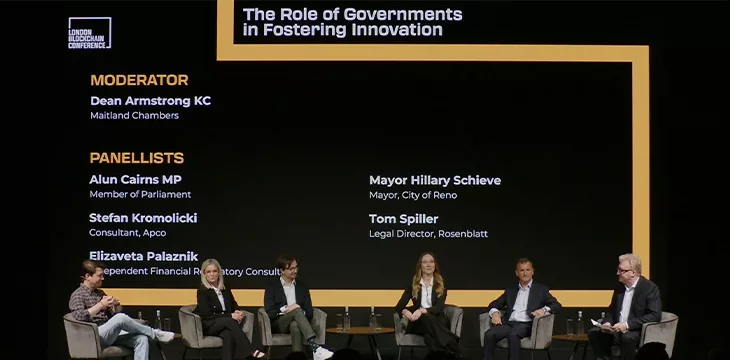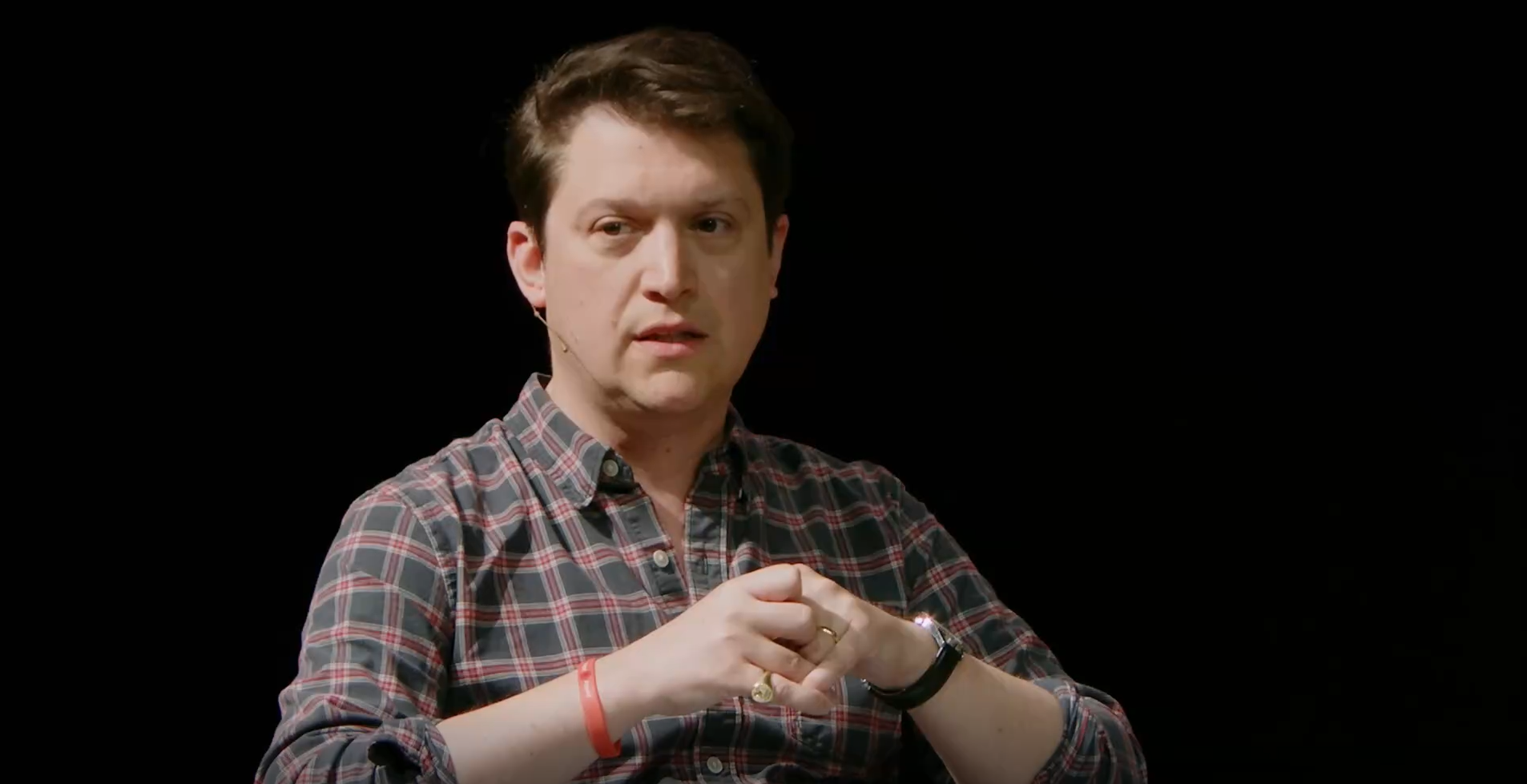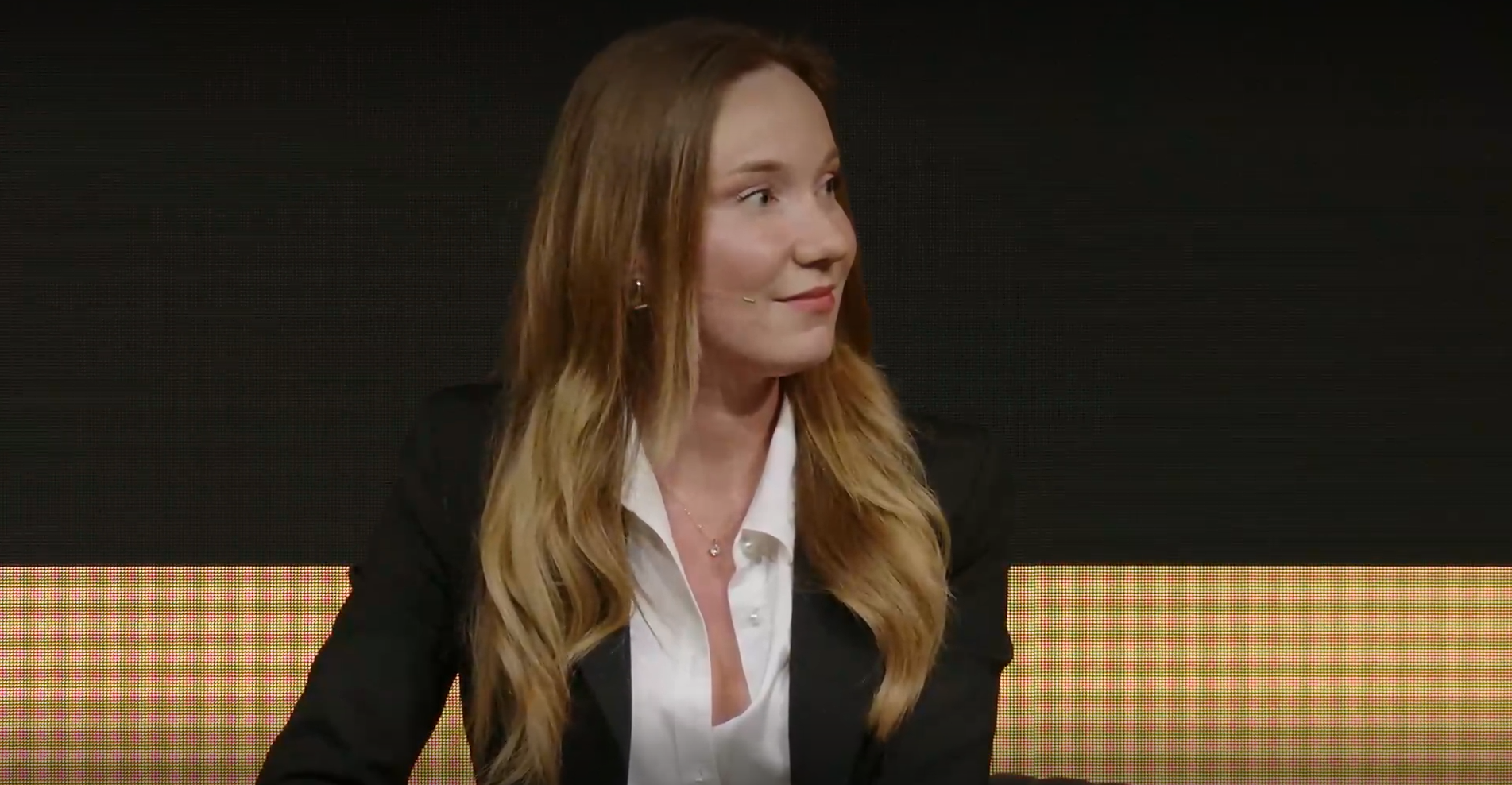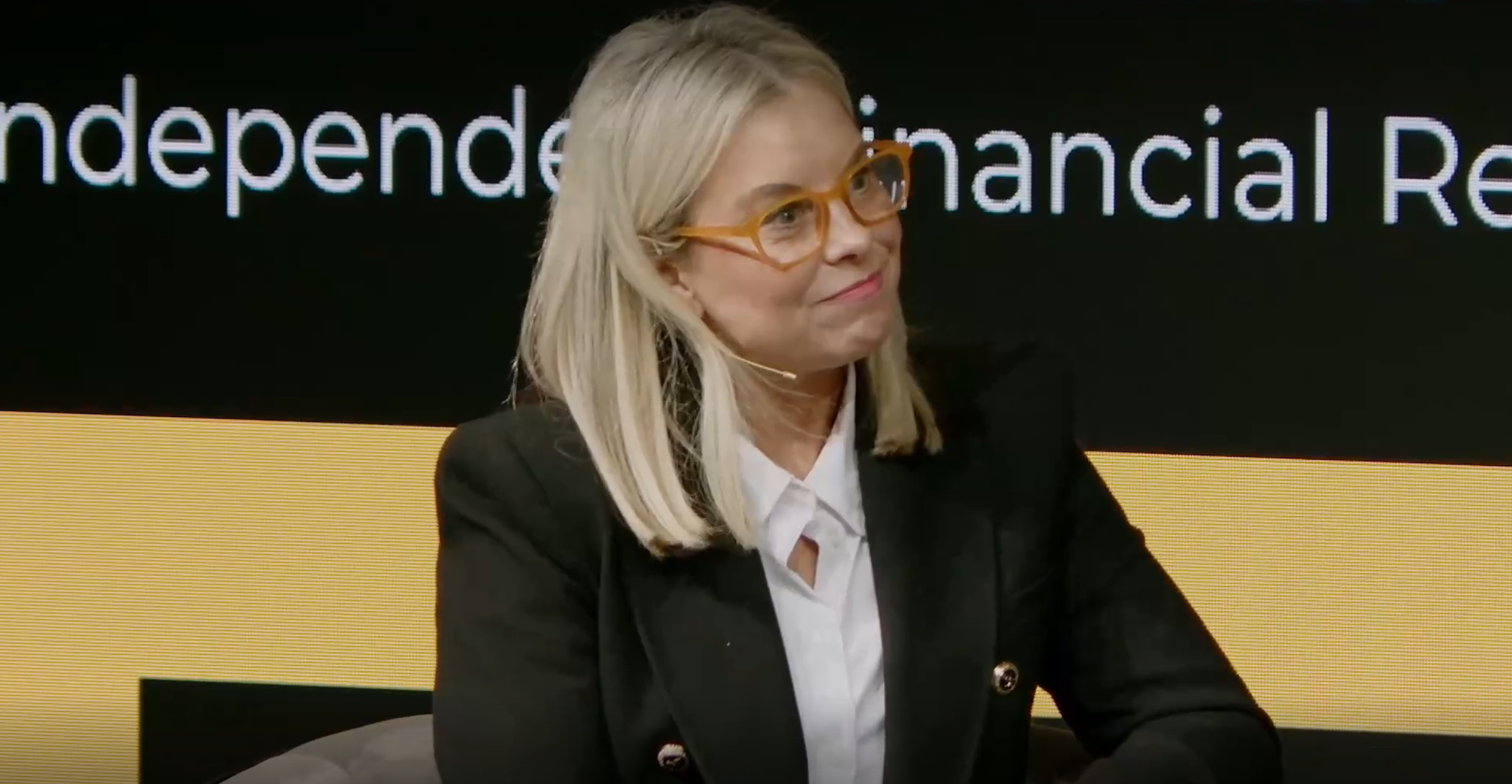News
Governi e blockchain: amici, nemici o qualcosa nel mezzo?

IL Conferenza Blockchain di Londra 2024 ha riunito politici di entrambe le sponde dell’Atlantico nel suo panel sul ruolo dei governi nella promozione dell’innovazione. Il panel ha posto la domanda: una politica efficace e un intervento governativo possono fungere da catalizzatore per la crescita e il progresso sociale, o è opportuno affidare al mercato il compito di determinare il proprio destino?
Il panel è stato moderato da Dean Armstrong KC, dello studio londinese Maitland Chambers. La richiesta di Armstrong per un rapporto sulla situazione delle risorse digitali del governo del Regno Unito è venuta da lì Alun Cairnsdeputato conservatore e vicepresidente della British Blockchain Association.
Cairns ha affermato che c’è solo “un piccolo numero” di parlamentari che capiscono la blockchain, con la maggior parte del Parlamento che immediatamente identifica la blockchain con elementi meno gustosi come le criptovalute, il dark web e simili. Cairns l’ha definita “una sfida di comprensione” piuttosto che una questione di “branding”, ma ha sottolineato la “sfida collettiva” che la comunità blockchain deve affrontare per “differenziare le criptovalute dalla blockchain ed evidenziare cosa fa la blockchain per migliorare i risultati politici”.
Cairns vede il suo ruolo in questa sfida come quello di “concentrarsi su aree politiche distinte che possono essere trasformative”. Cairns ha citato il notoriamente “inefficiente, costoso, complicato e impreciso processo” di trasferimento dei terreni come “probabilmente il frutto più maturo da raccogliere”, in parte perché è gestito da un’agenzia primaria.
L’aggiunta della tecnologia blockchain al trasferimento di terreni “lo renderebbe senza dubbio molto più efficiente” prevenendo allo stesso tempo “così tante frodi e così tanti rischi”. L’aggiunta della blockchain a questo processo “potrebbe quasi essere implementata su base pilota o su base regionale. Ciò darebbe fiducia ai politici, ai regolatori e ai funzionari pubblici”, per non parlare degli utenti pubblici.
Cairns ha sottolineato che il settore deve concentrarsi su aree “dove la blockchain potrebbe fare la differenza e apportare cambiamenti in modo positivo, in modo che le persone possano capire cosa fa senza preoccuparsi della tecnologia che sta dietro”. Una volta superato l’ostacolo, “le opportunità sono illimitate”.
Avviso di fuoriuscita
Armstrong allora interrogò Tom SpillerDirettore legale presso lo studio legale Rosenblatt nel Regno Unito, che fornisce consulenza alle aziende blockchain su come farlo rimanere entro i limiti legali.


Spiller ha affermato che “il principale fattore di differenziazione” nelle opinioni sulla blockchain “probabilmente sarà la geografia”. Mentre individui in paesi come Argentina e Turchia potrebbero vedere le risorse digitali come “un mezzo per risolvere il fallimento del mercato o dello stato”, altri paesi vedono un canale di rimesse economicamente vantaggioso mentre altri ancora lo vedono puramente come uno sforzo speculativo.
E poi ci sono paesi che “semplicemente non lo vogliono”, come Cina e Nigeria. Spiller sostiene che i governi di questi paesi “singolarmente non riescono a capire che il motivo per cui la blockchain è popolare è a causa loro”. I governi di paesi come l’America hanno avuto in antipatia le risorse digitali perché le loro prime esperienze sono state “molto negative”, basate sui mercati del dark web come Via della Seta e la popolarità delle risorse digitali presso i regimi canaglia (Corea del nord) E terroristi.
Secondo Spiller l’approccio del Giappone è il più interessante. A partire da Monte Gox scandalo, in cui un gran numero di clienti giapponesi hanno perso un sacco di soldi, Spiller dice che sarebbe stato molto facile per il governo giapponese “abbassare le saracinesche e dire ‘no, lo vieteremo, la Tulip mania, la gente che si diverte soldi rubati da astuti venditori di olio di serpente.’”
Invece, il Giappone “si è impegnato con quella che considerava la parte sofisticata della propria industria nazionale, ha affermato che ci sarà un regime di licenze, e se alcuni di voi non saranno in grado di raggiungere gli standard sufficienti che richiediamo ai nostri cittadini, resterete senza lavoro. Allo stesso tempo, hanno fatto qualcosa di radicale, hanno riconosciuto soprattutto Bitcoin come moneta avente corso legale.” Questo approccio “radicale” del bastone e della carota ha “pagato loro i dividendi”.
Spiller ha contrapposto l’approccio del Giappone al disastro con quello della Corea del Sud, che sulla scia di molteplici scandali ha imposto un regime rigoroso che li ha visti passare da “un ecosistema in forte espansione di circa 50 scambi a cinque”. Spiller non ha risparmiato il suo mercato interno, sottolineando che un tempo il Regno Unito aveva “letteralmente centinaia di aziende attive in questo settore”, ma ora è sceso a poco più di 30 aziende.
Armstrong ha contrapposto questo approccio frammentato al modo in cui i governi di tutto il mondo hanno adottato un approccio più uniforme nei confronti delle tecnologie più recenti come intelligenza artificiale (AI). Spiller ha affermato che il problema della blockchain è che “esisteva in un vuoto totale, quindi i regolatori non dovevano interagire con essa finché non si presentava un problema”. Le diverse esperienze blockchain “sono nate in diversi contesti sociali e hanno portato a questa enorme varianza”.


Prova, prova, ancora trilemma
Il prossimo è stato Elizaveta Palaznik, un consulente di regolamentazione finanziaria con sede a Bruxelles. Palaznik ha descritto quello che ha chiamato “il trilemma blockchain”, ovvero la necessità delle aziende di trovare un “punto debole” tra decentralizzazione, sicurezza e scalabilità. Ciò è stato difficile da raggiungere perché, ad esempio, le aziende che desiderano la scalabilità generalmente devono compromettere la loro attuale posizione sulla decentralizzazione.
Palaznik ha affermato che la sfida è particolarmente grave per le aziende più piccole, che potrebbero avere un unico individuo incaricato di garantire la conformità. Queste aziende le dicono che se hanno bisogno di “spendere tanti soldi quanto un gigante Binance, non sopravviveremo”. Dice alle aziende che i costi “dovrebbero essere proporzionati al loro rischio sistemico”, ma i pesciolini della blockchain dovrebbero comunque “dimostrare al regolatore che sei in buona fede” e almeno “avviare il processo di conformità”.


I regolatori si trovano ad affrontare il proprio trilemma; la necessità di “fermare i cattivi attori e proteggere i consumatori senza rallentare in qualche modo l’innovazione. Spesso si va a scapito degli altri”. Per trovare il proprio punto debole, i regolatori “devono essere informati su ciò che regolamentano”, altrimenti le aziende potrebbero trasferirsi in giurisdizioni che comprendono meglio il settore.
Palaznik ha fatto riferimento a quella dell’Unione Europea Mercati delle attività crittografiche (MiCA), il disposizioni sulle stablecoin di cui entreranno in vigore il 30 giugno, con il resto delle regole che entreranno in vigore il 30 dicembre. Palaznik ha detto di essere cautamente ottimista sul fatto che il mercato “procederà a ritmo sostenuto” sotto MiCA piuttosto che esserne ostacolato, ma si riserva di giudicare fino a quando i regolamenti non saranno stati approvati. in vigore da un anno.
Vuoi parlare di blockchain?
Il prossimo è stato Stefan Kromolickiconsulente del gruppo commerciale blockchain Apco nel mondo, che rappresenta 90 aziende in Europa e nel mondo. Kromolicki ha affermato che l’obiettivo di Apco è “creare un dialogo tra il mercato e coloro che creano la legge”, sottolineando che “per i governi, tutta questa roba è completamente nuova”.


L’obiettivo di Kromolicki è quello di “garantire che il mercato sia coinvolto” nella creazione delle normative, auspicabilmente contribuendo in fase di stesura. “La nostra missione principale è combattere le idee sbagliate, sottolineare che quando FTX succede, non è perché è blockchain, ma perché la frode è un crimine.”
Armstrong ha osservato che la sfida che deve affrontare il settore delle risorse digitali è che “c’è così tanto gergo che gli estranei ritengono che sia tutto troppo complicato”. Kromolicki ha affermato che gruppi come Apco “cercano di tradurre le preoccupazioni – molto spesso a livello tecnico e concreto – ai politici”, mentre allo stesso tempo “traducono le preoccupazioni dei politici” al mercato. Gruppi come Apco offrono uno sportello unico a cui i politici possono accedere quando cercano di raccogliere cosa pensa il mercato complessivo di questa o quella proposta normativa.
Lasciamo correre l’innovazione!
Ultimo ma non meno importante è stato Hillary Schieve, il sindaco di Reno, Nevada. Eletta nel 2014, Schieve ha affermato che Reno all’epoca stava ancora lottando per emergere dalla recessione del 2008, spingendola a concludere che la città aveva bisogno di diversificare la propria economia lontano dai casinò e abbracciare il “rischio e l’innovazione” del settore tecnologico.


Il cambiamento di Schieve alla fine attirò aziende come Amazon, Tesla e altre a costruire localmente, mentre Schieve organizzò un’iniziativa token non fungibile (NFT) del Balena spaziale, un’installazione fisica originariamente creata per il festival Burning Man. Schieve ha definito l’NFT un modo per “altre persone di condividere l’arte della città”. Schieve ha anche messo le “proprietà storiche della città su blockchain in modo che non potessero essere manipolate” e ha iniziato a compilare rapporti del personale utilizzando l’intelligenza artificiale.
Schieve è anche l’attuale presidente della Conferenza dei sindaci degli Stati Uniti e vede parte del suo ruolo nel “presentare queste cose ad altri sindaci”. Il suo messaggio non è sempre ben accolto, ma un recente “caso di prova” coinvolge ChatGPT ha lasciato molti altri sindaci “a bocca aperta”. Schieve ha affermato che la retorica politica ha lasciato molti abituati a tali messaggi, ma il trucco era “andare là fuori ed essere autentici e onesti riguardo alle aspettative”.
Domande e risposte
La sezione di domande e risposte del panel è iniziata con Armstrong che chiedeva quanto spettasse ai governi promuovere l’innovazione. Cairns ha insistito sul fatto che dovesse trattarsi di una partnership, con il settore privato che presenta un piano e convince il governo che vale la pena andare avanti, mentre la responsabilità del governo è quella di creare la giusta regolamentazione. Cairns ha ribadito “la necessità di trovare aree distinte per creare fiducia”.
Kromolicki ha fatto eco a questo punto di vista, affermando che le aziende devono “mostrare quali problemi stiamo cercando di risolvere con la tecnologia piuttosto che mostrare come la tecnologia sia fantastica, interessante e così via”. I regolatori sono persone molto pragmatiche e quindi le aziende devono “mettere in primo piano questi casi d’uso”.
Schieve ha detto che non è un segreto che il governo sia “totalmente antiquato”, ma ha esortato il settore privato a contattarla riguardo alle “tue grandi idee” perché ci sono “cose che posso fare per promuovere la tua innovazione e aprire quelle porte”. Spiller ha commentato che gli piacerebbe “arrivare a Reno” per trarre vantaggio dall’approccio collaborativo di Schieve.
Un membro del pubblico ha chiesto a Cairns quale ruolo potrebbe svolgere la blockchain nel migliorare il servizio sanitario nazionale (NHS) del Regno Unito, portando Cairns a rivelare che diversi membri della famiglia lavoravano in qualche modo in campo medico, e tutti hanno parlato del “volume paralizzante di pratiche burocratiche che hanno”. devo fare.”
Cairns ha affermato che la combinazione di blockchain e intelligenza artificiale potrebbe “liberare [medical professionals] per ore di cure” ma il sistema sanitario nazionale “è quasi come una fede, quindi dobbiamo essere cauti nell’introdurre la blockchain perché dobbiamo avere fiducia” che non peggiorerà inavvertitamente le cose a breve termine. Ripetendo il suo consiglio di raccogliere frutti più a portata di mano – almeno per il momento – Cairns ha suggerito che “dobbiamo fare alcuni piccoli passi prima di arrivare a” risolvere i mali ben pubblicizzati del servizio sanitario nazionale.
Guarda: riepilogo del primo giorno della London Blockchain Conference 2024

 larghezza=”562″ altezza=”315″ frameborder=”0″allowfullscreen=”allowfullscreen”>
larghezza=”562″ altezza=”315″ frameborder=”0″allowfullscreen=”allowfullscreen”>
Momenti salienti del secondo giorno della London Blockchain Conference 2024

 larghezza=”562″ altezza=”315″ frameborder=”0″allowfullscreen=”allowfullscreen”>
larghezza=”562″ altezza=”315″ frameborder=”0″allowfullscreen=”allowfullscreen”>
Momenti salienti del terzo giorno della London Blockchain Conference 2024

 larghezza=”562″ altezza=”315″ frameborder=”0″allowfullscreen=”allowfullscreen”>
larghezza=”562″ altezza=”315″ frameborder=”0″allowfullscreen=”allowfullscreen”>
Nuovo nella blockchain? Dai un’occhiata a CoinGeek Blockchain per principianti sezione, la guida definitiva alle risorse per saperne di più sulla tecnologia blockchain.
News
An enhanced consensus algorithm for blockchain

The introduction of the link and reputation evaluation concepts aims to improve the stability and security of the consensus mechanism, decrease the likelihood of malicious nodes joining the consensus, and increase the reliability of the selected consensus nodes.
The link model structure based on joint action
Through the LINK between nodes, all the LINK nodes engage in consistent activities during the operation of the consensus mechanism. The reputation evaluation mechanism evaluates the trustworthiness of nodes based on their historical activity status throughout the entire blockchain. The essence of LINK is to drive inactive nodes to participate in system activities through active nodes. During the stage of selecting leader nodes, nodes are selected through self-recommendation, and the reputation evaluation of candidate nodes and their LINK nodes must be qualified. The top 5 nodes of the total nodes are elected as leader nodes through voting, and the nodes in their LINK status are candidate nodes. In the event that the leader node goes down, the responsibility of the leader node is transferred to the nodes in its LINK through the view-change. The LINK connection algorithm used in this study is shown in Table 2, where LINKm is the linked group and LINKP is the percentage of linked nodes.
Table 2 LINK connection algorithm.
Node type
This paper presents a classification of nodes in a blockchain system based on their functionalities. The nodes are divided into three categories: leader nodes (LNs), follower nodes (FNs), and general nodes (Ns). The leader nodes (LNs) are responsible for producing blocks and are elected through voting by general nodes. The follower nodes (FNs) are nodes that are linked to leader nodes (LNs) through the LINK mechanism and are responsible for validating blocks. General nodes (N) have the ability to broadcast and disseminate information, participate in elections, and vote. The primary purpose of the LINK mechanism is to act in combination. When nodes are in the LINK, there is a distinction between the master and slave nodes, and there is a limit to the number of nodes in the LINK group (NP = {n1, nf1, nf2 ……,nfn}). As the largest proportion of nodes in the system, general nodes (N) have the right to vote and be elected. In contrast, leader nodes (LNs) and follower nodes (FNs) do not possess this right. This rule reduces the likelihood of a single node dominating the block. When the system needs to change its fundamental settings due to an increase in the number of nodes or transaction volume, a specific number of current leader nodes and candidate nodes need to vote for a reset. Subsequently, general nodes need to vote to confirm this. When both confirmations are successful, the new basic settings are used in the next cycle of the system process. This dual confirmation setting ensures the fairness of the blockchain to a considerable extent. It also ensures that the majority holds the ultimate decision-making power, thereby avoiding the phenomenon of a small number of nodes completely controlling the system.
After the completion of a governance cycle, the blockchain network will conduct a fresh election for the leader and follower nodes. As only general nodes possess the privilege to participate in the election process, the previous consortium of leader and follower nodes will lose their authorization. In the current cycle, they will solely retain broadcasting and receiving permissions for block information, while their corresponding incentives will also decrease. A diagram illustrating the node status can be found in Fig. 1.
Election method
The election method adopts the node self-nomination mode. If a node wants to participate in an election, it must form a node group with one master and three slaves. One master node group and three slave node groups are inferred based on experience in this paper; these groups can balance efficiency and security and are suitable for other project collaborations. The successfully elected node joins the leader node set, and its slave nodes enter the follower node set. Considering the network situation, the maximum threshold for producing a block is set to 1 s. If the block fails to be successfully generated within the specified time, it is regarded as a disconnected state, and its reputation score is deducted. The node is skipped, and in severe cases, a view transformation is performed, switching from the master node to the slave node and inheriting its leader’s rights in the next round of block generation. Although the nodes that become leaders are high-reputation nodes, they still have the possibility of misconduct. If a node engages in misconduct, its activity will be immediately stopped, its comprehensive reputation score will be lowered, it will be disqualified from participating in the next election, and its equity will be reduced by 30%. The election process is shown in Fig. 2.
Incentives and penalties
To balance the rewards between leader nodes and ordinary nodes and prevent a large income gap, two incentive/penalty methods will be employed. First, as the number of network nodes and transaction volume increase, more active nodes with significant stakes emerge. After a prolonged period of running the blockchain, there will inevitably be significant class distinctions, and ordinary nodes will not be able to win in the election without special circumstances. To address this issue, this paper proposes that rewards be reduced for nodes with stakes exceeding a certain threshold, with the reduction rate increasing linearly until it reaches zero. Second, in the event that a leader or follower node violates the consensus process, such as by producing a block out of order or being unresponsive for an extended period, penalties will be imposed. The violation handling process is illustrated in Fig. 3.
Violation handling process.
Comprehensive reputation evaluation and election mechanism based on historical transactions
This paper reveals that the core of the DPoS consensus mechanism is the election process. If a blockchain is to run stably for a long time, it is essential to consider a reasonable election method. This paper proposes a comprehensive reputation evaluation election mechanism based on historical records. The mechanism considers the performance indicators of nodes in three dimensions: production rate, tokens, and validity. Additionally, their historical records are considered, particularly whether or not the nodes have engaged in malicious behavior. For example, nodes that have ever been malicious will receive low scores during the election process unless their overall quality is exceptionally high and they have considerable support from other nodes. Only in this case can such a node be eligible for election or become a leader node. The comprehensive reputation score is the node’s self-evaluation score, and the committee size does not affect the computational complexity.
Moreover, the comprehensive reputation evaluation proposed in this paper not only is a threshold required for node election but also converts the evaluation into corresponding votes based on the number of voters. Therefore, the election is related not only to the benefits obtained by the node but also to its comprehensive evaluation and the number of voters. If two nodes receive the same vote, the node with a higher comprehensive reputation is given priority in the ranking. For example, in an election where node A and node B each receive 1000 votes, node A’s number of stake votes is 800, its comprehensive reputation score is 50, and only four nodes vote for it. Node B’s number of stake votes is 600, its comprehensive reputation score is 80, and it receives votes from five nodes. In this situation, if only one leader node position remains, B will be selected as the leader node. Displayed in descending order of priority as comprehensive credit rating, number of voters, and stake votes, this approach aims to solve the problem of node misconduct at its root by democratizing the process and subjecting leader nodes to constraints, thereby safeguarding the fundamental interests of the vast majority of nodes.
Comprehensive reputation evaluation
This paper argues that the election process of the DPoS consensus mechanism is too simplistic, as it considers only the number of election votes that a node receives. This approach fails to comprehensively reflect the node’s actual capabilities and does not consider the voters’ election preferences. As a result, nodes with a significant stake often win and become leader nodes. To address this issue, the comprehensive reputation evaluation score is normalized considering various attributes of the nodes. The scoring results are shown in Table 3.
Table 3 Comprehensive reputation evaluation.
Since some of the evaluation indicators in Table 3 are continuous while others are discrete, different normalization methods need to be employed to obtain corresponding scores for different indicators. The continuous indicators include the number of transactions/people, wealth balance, network latency, network jitter, and network bandwidth, while the discrete indicators include the number of violations, the number of successful elections, and the number of votes. The value range of the indicator “number of transactions/people” is (0,1), and the value range of the other indicators is (0, + ∞). The equation for calculating the “number of transactions/people” is set as shown in Eq. (1).
$$A_{1} = \left\{ {\begin{array}{*{20}l} {0,} \hfill & {{\text{G}} = 0} \hfill \\ {\frac{{\text{N}}}{{\text{G}}}*10,} \hfill & {{\text{G}} > 0} \hfill \\ \end{array} } \right.$$
(1)
where N represents the number of transactional nodes and G represents the number of transactions. It reflects the degree of connection between the node and other nodes. Generally, nodes that transact with many others are safer than those with a large number of transactions with only a few nodes. The limit value of each item, denoted by x, is determined based on the situation and falls within the specified range, as shown in Eq. (2). The wealth balance and network bandwidth indicators use the same function to set their respective values.
$${A}_{i}=20*\left(\frac{1}{1+{e}^{-{a}_{i}x}}-0.5\right)$$
(2)
where x indicates the value of this item and expresses the limit value.
In Eq. (3), x represents the limited value of this indicator. The lower the network latency and network jitter are, the higher the score will be.
The last indicators, which are the number of violations, the number of elections, and the number of votes, are discrete values and are assigned different scores according to their respective ranges. The scores corresponding to each count are shown in Table 4.
$$A_{3} = \left\{ {\begin{array}{*{20}l} {10*\cos \frac{\pi }{200}x,} \hfill & {0 \le x \le 100} \hfill \\ {0,} \hfill & {x > 100} \hfill \\ \end{array} } \right.$$
(3)
Table 4 Score conversion.
The reputation evaluation mechanism proposed in this paper comprehensively considers three aspects of nodes, wealth level, node performance, and stability, to calculate their scores. Moreover, the scores obtain the present data based on historical records. Each node is set as an M × N dimensional matrix, where M represents M times the reputation evaluation score and N represents N dimensions of reputation evaluation (M < = N), as shown in Eq. (4).
$${\text{N}} = \left( {\begin{array}{*{20}c} {a_{11} } & \cdots & {a_{1n} } \\ \vdots & \ddots & \vdots \\ {a_{m1} } & \cdots & {a_{mn} } \\ \end{array} } \right)$$
(4)
The comprehensive reputation rating is a combined concept related to three dimensions. The rating is set after rating each aspect of the node. The weight w and the matrix l are not fixed. They are also transformed into matrix states as the position of the node in the system changes. The result of the rating is set as the output using Eq. (5).
$$\text{T}=\text{lN}{w}^{T}=\left({l}_{1}\dots {\text{l}}_{\text{m}}\right)\left(\begin{array}{ccc}{a}_{11}& \cdots & {a}_{1n}\\ \vdots & \ddots & \vdots \\ {a}_{m1}& \cdots & {a}_{mn}\end{array}\right){\left({w}_{1}\dots {w}_{n}\right)}^{T}$$
(5)
Here, T represents the comprehensive reputation score, and l and w represent the correlation coefficient. Because l is a matrix of order 1*M, M is the number of times in historical records, and M < = N is set, the number of dimensions of l is uncertain. Set the term l above to add up to 1, which is l1 + l2 + …… + ln = 1; w is also a one-dimensional matrix whose dimension is N*1, and its purpose is to act as a weight; within a certain period of time, w is a fixed matrix, and w will not change until the system changes the basic settings.
Assume that a node conducts its first comprehensive reputation rating, with no previous transaction volume, violations, elections or vote. The initial wealth of the node is 10, the latency is 50 ms, the jitter is 100 ms, and the network bandwidth is 100 M. According to the equation, the node’s comprehensive reputation rating is 41.55. This score is relatively good at the beginning and gradually increases as the patient participates in system activities continuously.
Voting calculation method
To ensure the security and stability of the blockchain system, this paper combines the comprehensive reputation score with voting and randomly sorts the blocks, as shown in Eqs. (3–6).
$$Z=\sum_{i=1}^{n}{X}_{i}+nT$$
(6)
where Z represents the final election score, Xi represents the voting rights earned by the node, n is the number of nodes that vote for this node, and T is the comprehensive reputation score.
The voting process is divided into stake votes and reputation votes. The more reputation scores and voters there are, the more total votes that are obtained. In the early stages of blockchain operation, nodes have relatively few stakes, so the impact of reputation votes is greater than that of equity votes. This is aimed at selecting the most suitable node as the leader node in the early stage. As an operation progresses, the role of equity votes becomes increasingly important, and corresponding mechanisms need to be established to regulate it. The election vote algorithm used in this paper is shown in Table 5.
Table 5 Election vote counting algorithm.
This paper argues that the election process utilized by the original DPoS consensus mechanism is overly simplistic, as it relies solely on the vote count to select the node that will oversee the entire blockchain. This approach cannot ensure the security and stability of the voting process, and if a malicious node behaves improperly during an election, it can pose a significant threat to the stability and security of the system as well as the safety of other nodes’ assets. Therefore, this paper proposes a different approach to the election process of the DPoS consensus mechanism by increasing the complexity of the process. We set up a threshold and optimized the vote-counting process to enhance the security and stability of the election. The specific performance of the proposed method was verified through experiments.
The election cycle in this paper can be customized, but it requires the agreement of the blockchain committee and general nodes. The election cycle includes four steps: node self-recommendation, calculating the comprehensive reputation score, voting, and replacing the new leader. Election is conducted only among general nodes without affecting the production or verification processes of leader nodes or follower nodes. Nodes start voting for preferred nodes. If they have no preference, they can use the LINK mechanism to collaborate with other nodes and gain additional rewards.
View changes
During the consensus process, conducting a large number of updates is not in line with the system’s interests, as the leader node (LN) and follower node (FN) on each node have already been established. Therefore, it is crucial to handle problematic nodes accurately when issues arise with either the LN or FN. For instance, when a node fails to perform its duties for an extended period or frequently fails to produce or verify blocks within the specified time range due to latency, the system will precisely handle them. For leader nodes, if they engage in malicious behavior such as producing blocks out of order, the behavior is recorded, and their identity as a leader node is downgraded to a follower node. The follower node inherits the leader node’s position, and the nature of their work is transformed as they swap their responsibilities of producing and verifying blocks with their original work. This type of behavior will not significantly affect the operation of the blockchain system. Instead of waiting until the end of the current committee round to punish malicious nodes, dynamic punishment is imposed on the nodes that affect the operation of the blockchain system to maintain system security. The view change operation is illustrated in Fig. 4.
In traditional PBFT, view changes are performed according to the view change protocol by changing the view number V to the next view number V + 1. During this process, nodes only receive view change messages and no other messages from other nodes. In this paper, the leader node group (LN) and follower node group (FN) are selected through an election of the LINK group. The node with LINKi[0] is added to the LN leader node group, while the other three LINK groups’ follower nodes join the FN follower node group since it is a configuration pattern of one master and three slaves. The view change in this paper requires only rearranging the node order within the LINK group to easily remove malicious nodes. Afterward, the change is broadcast to other committee nodes, and during the view transition, the LINK group does not receive block production or verification commands from the committee for stability reasons until the transition is completed.
News
The Hype Around Blockchain Mortgage Has Died Down, But This CEO Still Believes

LiquidFi Founder Ian Ferreira Sees Huge Potential in Blockchain Despite Hype around technology is dead.
“Blockchain technology has been a buzzword for a long time, and it shouldn’t be,” Ferriera said. “It should be a technology that lives in the background, but it makes everything much more efficient, much more transparent, and ultimately it saves costs for everyone. That’s the goal.”
Before founding his firm, Ferriera was a portfolio manager at a hedge fund, a job that ended up revealing “interesting intricacies” related to the mortgage industry.
Being a mortgage trader opened Ferriera’s eyes to a lot of the operational and infrastructure problems that needed to be solved in the mortgage-backed securities industry, he said. That later led to the birth of LiquidFi.
“The point of what we do is to get raw data attached to a resource [a loan] on a blockchain so that it’s provable. You reduce that trust problem because you have the data, you have the document associated with that data,” said the LiquidFi CEO.
Ferriera spoke with National Mortgage News about the value of blockchain technology, why blockchain hype has fizzled out, and why it shouldn’t.
News
New bill pushes Department of Veterans Affairs to examine how blockchain can improve its work

The Department of Veterans Affairs would have to evaluate how blockchain technology could be used to improve benefits and services offered to veterans, according to a legislative proposal introduced Tuesday.
The bill, sponsored by Rep. Nancy Mace, R-S.C., would direct the VA to “conduct a comprehensive study of the feasibility, potential benefits, and risks associated with using distributed ledger technology in various programs and services.”
Distributed ledger technology, including blockchain, is used to protect and track information by storing data across multiple computers and keeping a record of its use.
According to the text of the legislation, which Mace’s office shared exclusively with Nextgov/FCW ahead of its publication, blockchain “could significantly improve benefits allocation, insurance program management, and recordkeeping within the Department of Veterans Affairs.”
“We need to bring the federal government into the 21st century,” Mace said in a statement. “This bill will open the door to research on improving outdated systems that fail our veterans because we owe it to them to use every tool at our disposal to improve their lives.”
Within one year of the law taking effect, the Department of Veterans Affairs will be required to submit a report to the House and Senate Veterans Affairs committees detailing its findings, as well as the benefits and risks identified in using the technology.
The mandatory review is expected to include information on how the department’s use of blockchain could improve the way benefits decisions are administered, improve the management and security of veterans’ personal data, streamline the insurance claims process, and “increase transparency and accountability in service delivery.”
The Department of Veterans Affairs has been studying the potential benefits of using distributed ledger technology, with the department emission a request for information in November 2021 seeking input from contractors on how blockchain could be leveraged, in part, to streamline its supply chains and “secure data sharing between institutions.”
The VA’s National Institute of Artificial Intelligence has also valued the use of blockchain, with three of the use cases tested during the 2021 AI tech sprint focused on examining its capabilities.
Mace previously introduced a May bill that would direct Customs and Border Protection to create a public blockchain platform to store and share data collected at U.S. borders.
Lawmakers also proposed additional measures that would push the Department of Veterans Affairs to consider adopting other modernized technologies to improve veteran services.
Rep. David Valadao, R-Calif., introduced legislation in June that would have directed the department to report to lawmakers on how it plans to expand the use of “certain automation tools” to process veterans’ claims. The House of Representatives Subcommittee on Disability Assistance and Memorial Affairs gave a favorable hearing on the congressman’s bill during a Markup of July 23.
News
California DMV Uses Blockchain to Fight Auto Title Fraud

TDR’s Three Takeaways: California DMV Uses Blockchain to Fight Fraud
- California DMV uses blockchain technology to manage 42 million auto titles.
- The initiative aims to improve safety and reduce car title fraud.
- The immutable nature of blockchain ensures accurate and tamper-proof records.
The California Department of Motor Vehicles (DMV) is implementing blockchain technology to manage and secure 42 million auto titles. This innovative move aims to address and reduce the persistent problem of auto title fraud, a problem that costs consumers and the industry millions of dollars each year. By moving to a blockchain-based system, the DMV is taking advantage of the technology’s key feature: immutability.
Blockchain, a decentralized ledger technology, ensures that once a car title is registered, it cannot be altered or tampered with. This creates a highly secure and transparent system, significantly reducing the risk of fraudulent activity. Every transaction and update made to a car title is permanently recorded on the blockchain, providing a complete and immutable history of the vehicle’s ownership and status.
As first reported by Reuters, the DMV’s adoption of blockchain isn’t just about preventing fraud. It’s also aimed at streamlining the auto title process, making it more efficient and intuitive. Traditional auto title processing involves a lot of paperwork and manual verification, which can be time-consuming and prone to human error. Blockchain technology automates and digitizes this process, reducing the need for physical documents and minimizing the chances of errors.
Additionally, blockchain enables faster verification and transfer of car titles. For example, when a car is sold, the transfer of ownership can be done almost instantly on the blockchain, compared to days or even weeks in the conventional system. This speed and efficiency can benefit both the DMV and the vehicle owners.
The California DMV’s move is part of a broader trend of government agencies exploring blockchain technology to improve their services. By adopting this technology, the DMV is setting a precedent for other states and industries to follow, showcasing blockchain’s potential to improve safety and efficiency in public services.
-

 Ethereum11 months ago
Ethereum11 months agoEthereum Posts First Consecutive Monthly Losses Since August 2023 on New ETFs
-

 Regulation11 months ago
Regulation11 months agoCryptocurrency Regulation in Slovenia 2024
-

 News11 months ago
News11 months agoNew bill pushes Department of Veterans Affairs to examine how blockchain can improve its work
-

 Regulation11 months ago
Regulation11 months agoThink You Own Your Crypto? New UK Law Would Ensure It – DL News
-

 Regulation11 months ago
Regulation11 months agoUpbit, Coinone, Bithumb Face New Fees Under South Korea’s Cryptocurrency Law
-

 Regulation11 months ago
Regulation11 months agoA Blank Slate for Cryptocurrencies: Kamala Harris’ Regulatory Opportunity
-

 Regulation11 months ago
Regulation11 months agoBahamas Passes Cryptocurrency Bill Designed to Prevent FTX, Terra Disasters
-

 Regulation11 months ago
Regulation11 months agoIndia to Follow G20 Policy for Cryptocurrency Regulation: MoS Finance
-

 Ethereum1 year ago
Ethereum1 year agoComment deux frères auraient dérobé 25 millions de dollars lors d’un braquage d’Ethereum de 12 secondes • The Register
-

 News1 year ago
News1 year ago“Captain Tsubasa – RIVALS” launches on Oasys Blockchain
-

 News11 months ago
News11 months agoEU supports 15 startups to fight online disinformation with blockchain
-

 Videos1 year ago
Videos1 year agoNexus Chain – Ethereum L2 with the GREATEST Potential?








